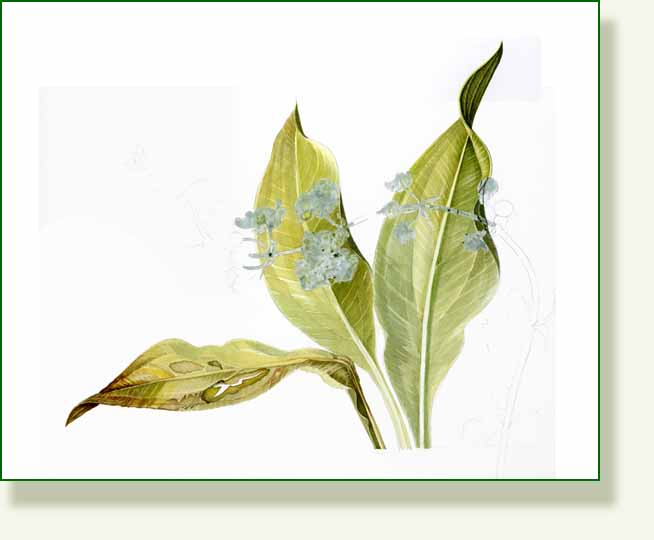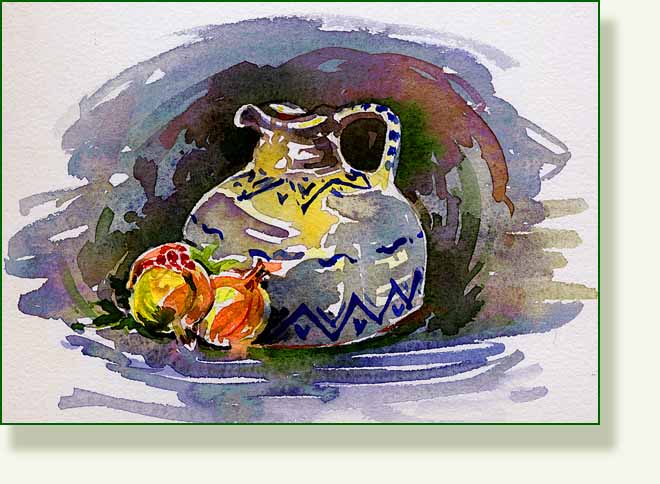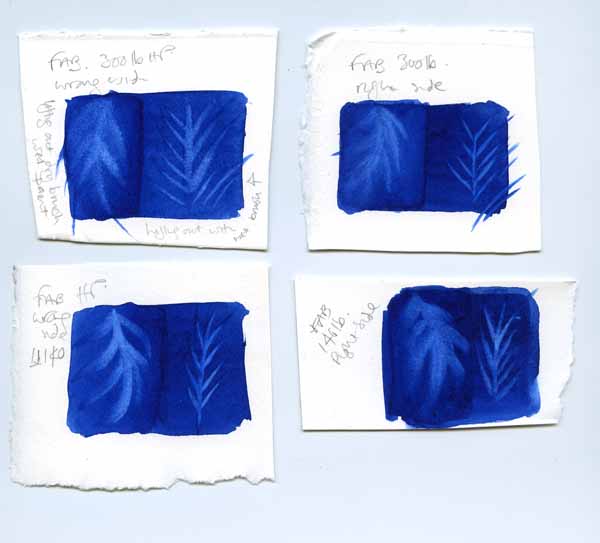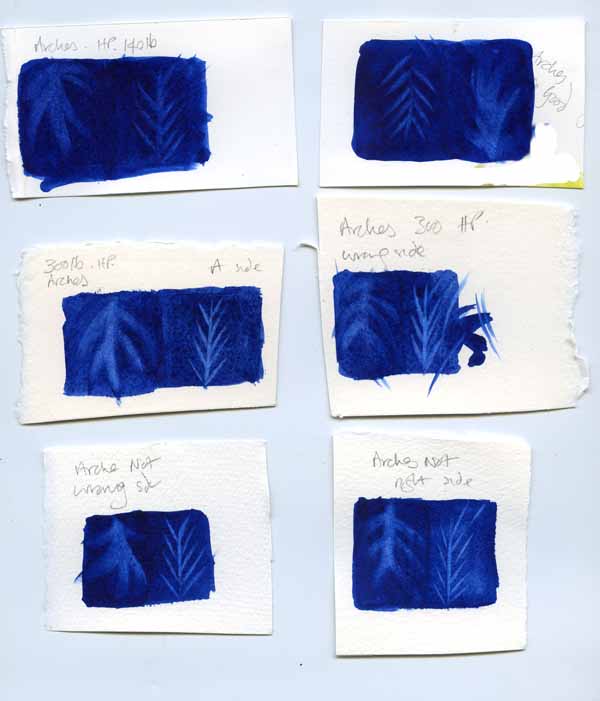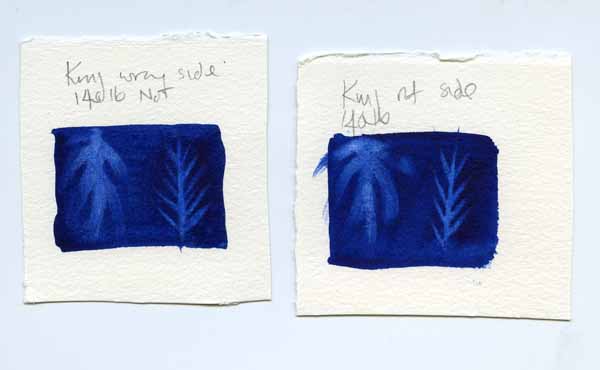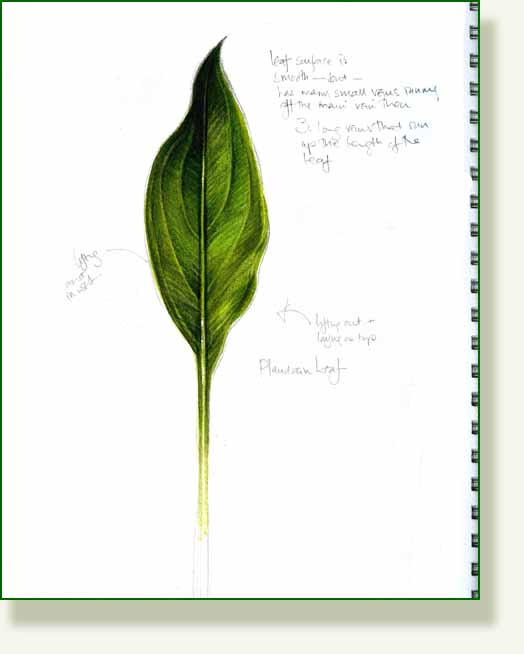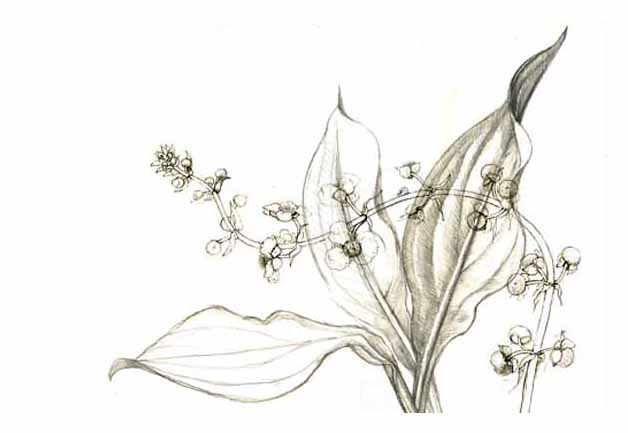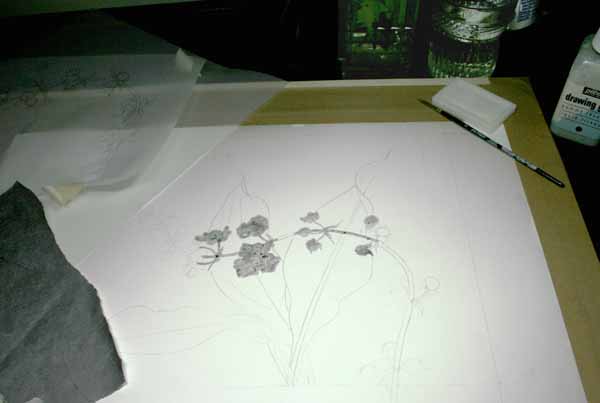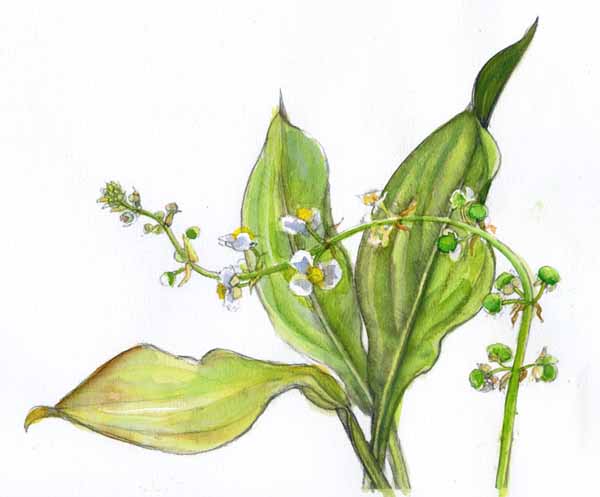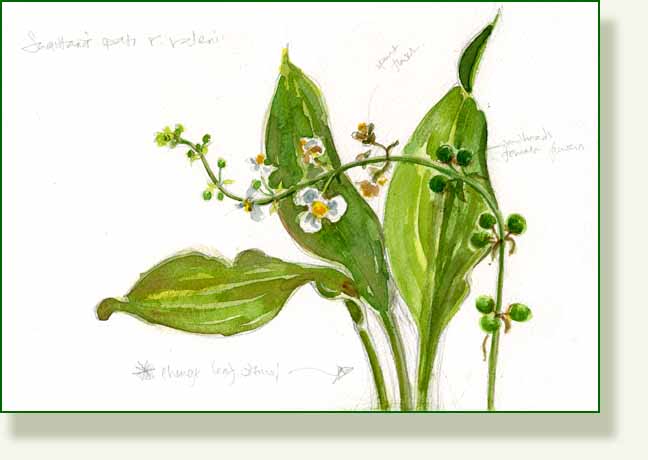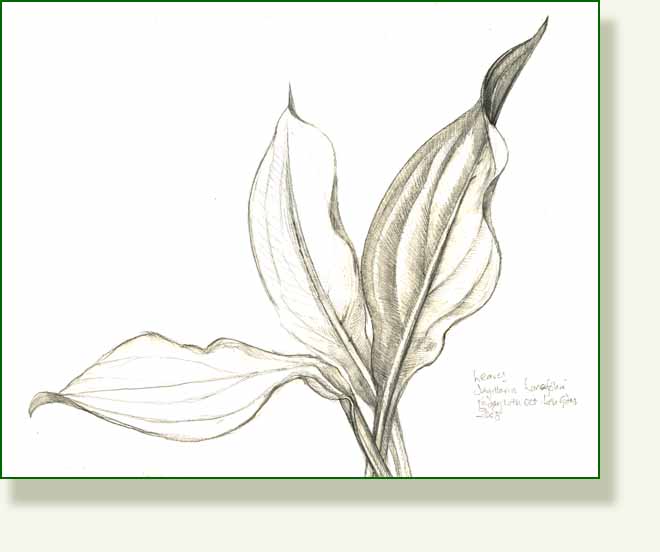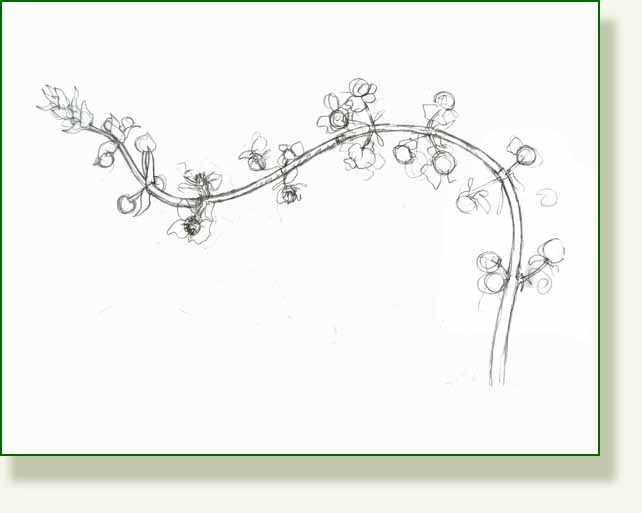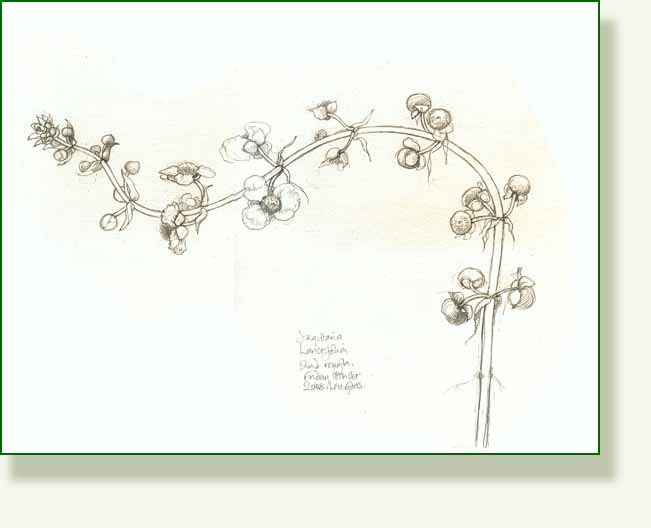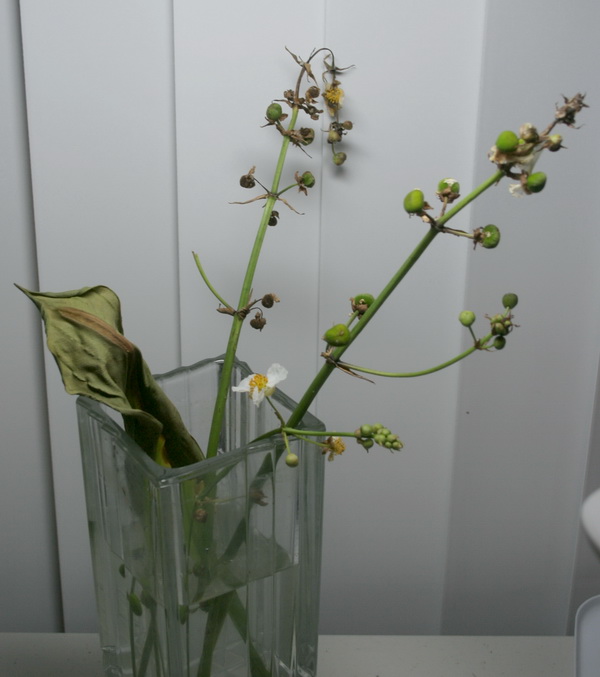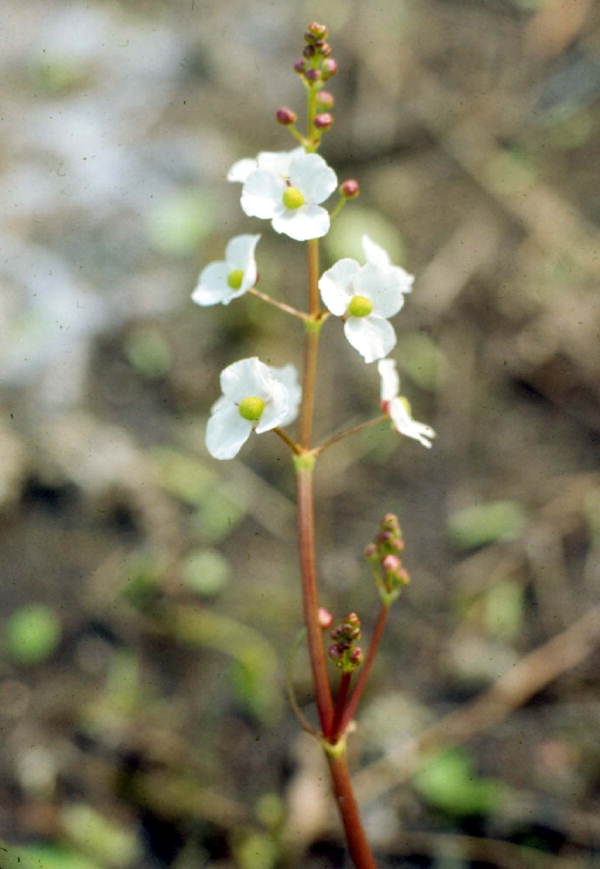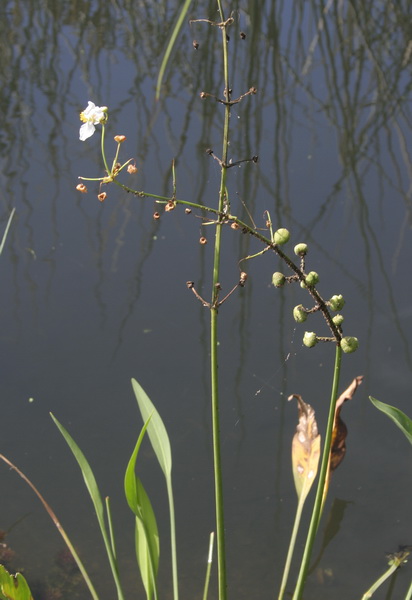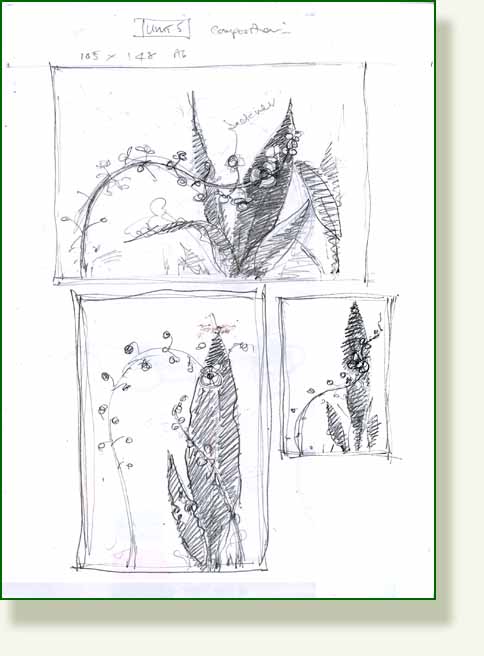I did eventually get started on the finished piece today. It’s that first agonising brushstroke, that awful point of no return, and not really knowing quite where to start. Yesterday I read by chance of an artist who has to tear up and destroy a full sheet of pure white unused expensive watercolour paper before she starts to paint, just to get rid of the fear. Apparently ordinary paper won’t do! I really sympathise with that. With other less formal watercolour techniques you can get rid of the white paper quickly. Here you are trying to preserve it at all costs.
I tried a few different colour combinations first, (and did the washing up, hung the washing out,tidied my desk and made a cup of tea and even cleaned a shelf in the fridge…) In an attempt to be the purist and mix my own green, rather than use premixed greens, I have ended up with transparent yellow, indanthrene blue and light red but I can feel the need for some sap green coming on….
The early stages of the painting looked fresh and loose but the problems for me occur when I am trying to build up the detail. By layer 3 the freshness had gone and it gets to that middle stage, where it now is, of neither being loose nor detailed and looks like nothing.
I go back to the step by step book for reassurance and there is none (of course). I am beginning to think there is not one good step by step book in the whole world. They are wildly vague..
i.e. …”When the painting is still wet, add the darker green” …
Ok.. How wet is wet? Is it sloshing-about-the-paper wet? Is it still-shiny-in-the-light wet? Is it just-matt wet? Is it only damp-to-the-touch wet or is it really, nearly dry???
And just how dark is the dark green? How much pigment? How much water?
Just in that one casual sentence lie 500 possible traps and opportunities for your work to go horribly wrong.
And why are they always perfect? Can’t we have a proper step by step book where the mistakes are shown to encourage the pupil. It is, after all, the way most of us learn?
If I survive this course I have decided I will write “The Naked Truth Guide to Watercolor ” a step by step book, with warts and all.
While one layer of paint is drying I go back to another book, just for some inspiration and read about the problems that even very experienced artists have had. It is comforting, as I watch the leaves and flowers wither in front of me, to read Shirley Sherwood’s account of trying to commission botanical paintings of her favourite plants.
” Streptocarpus did not enjoy being moved out of my orangery to be painted by Jo Hague and shed their flowers. The spathe of Monstera Deliciosa fell off in transit before Coral Guest could work on it and she had to wait weeks for another one to develop. Pandora Sellars had to paint her magnificent Blue Water Lily over two years as she could only complete the flowers during the first year and had to finish the leaves during the next season. “
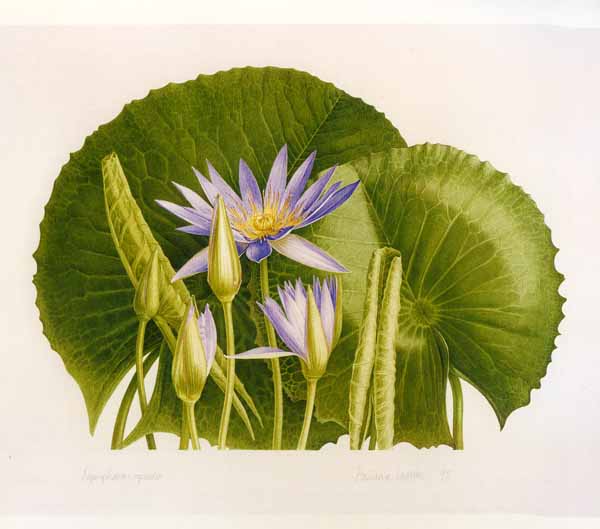
Here it is, in Shirley Sherwood’s book “Treasures of Botanical Art”. No step by steps, just beautiful inspirational paintings.
_____________________________________________



